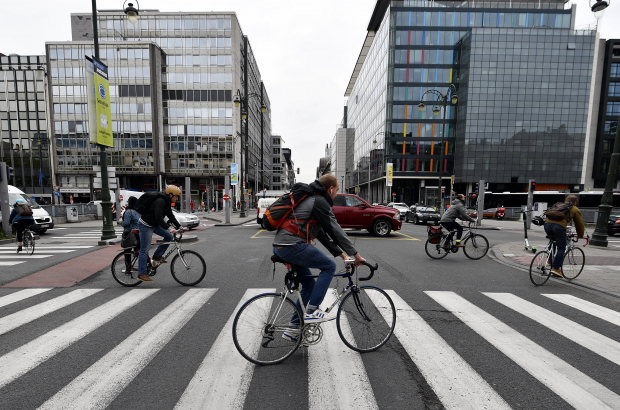- Daily & Weekly newsletters
- Buy & download The Bulletin
- Comment on our articles
Getting around by bicycle and scooter in Brussels
Bikes can be taken on metros and trams in Brussels, but not on weekdays at peak times (7.00-9.00 and 16.00-18.00). For those looking to buy their own bike, Decathlon and Carrefour offer value for money, though there are plenty of independent dealers. Ciclissimo in the Montgomery area has been around for 25 years. VéloSofiets offers second-hand and recycled bikes, as do Cyclo and Bike Paradise at Petit Riens as well as many of Brussels’ flea markets. You can use eco-cheques to buy a bike and pay for maintenance.
Various non-profits support the adoption of cycling. Gracq offers halfday training courses in the essentials on traffic rules and safety tips for cycling in the city. Bike Experience is an annual event that gives drivers the opportunity to try biking for two weeks, while Bruxelles Mobility publishes a cycling map of the city. Biker2biker is a forum for experienced cyclists to support novices.
In the Brussels region, you can get your bike engraved with your national identification number. This service is performed free on designated dates at police stations and town halls, as well as at ProVelo stations and the bike points or workshop operated by Cyclo. The new mybike.brussels platform allows bike owners to register their bike and order a hard-to-remove sticker that identifies their vehicle and helps protect against theft. Anyone looking to buy a secondhand bike will be able to scan the code on the sticker and see if the bike has been reported stolen.
Report stolen bikes to police and keep an eye out for your bike at local second-hand shops, in the online classified ads, or at Sunday’s Midi market in Brussels.
- velosofiets.be
- ciclissimo.be
- fietsenwerk.be
- gracq.be
- bikeexperience.be
- provelo.be
- cyclo.be
- fietsersbond.be
- mybike.brussels
- byebyebicycle.wordpress.com
- biker2biker.be
- fietsnet.be
- ravel.wallonie.be
BIKE-SHARING
Villo is Brussels’ shared bike system, with more than 300 stations all over the city. You can buy a ticket at the terminal (valid for one day or seven days, and the first half an hour is free) or sign up for an annual subscription. Holders of Mobib cards can use their card for the Villo system. Namur’s Li Bia Velo and Antwerp’s Velo Antwerpen operate in the same way, and the tariffs are similar.
Blue Bike is a bike rental system managed by train operator SNCB/ NMBS, to help railway travellers cover the journey from the train station to their destination. You can find rental stations beside train stations in about 40 Belgian cities. To use it, sign up for a subscription (€12 a year) either online or at one of 12 bike points (Point vélo in French, Fietspunt in Dutch). It costs €3.15 for a bike and it’s valid for 24 hours.
Cycad offers electric and nonelectric bikes for rent; the further you bike, the less you pay. The bikes, featuring bamboo frames, are made in Belgium. Billy Bike and Uber’s Jump are app-based electric bike sharing schemes without fixed docking stations. Use the app to find your nearest bike and drop it off at any safe place when you are done.
SHARED SCOOTERS
Several companies now provide shared electric scooters in various parts of Brussels and other cities including Liège, Namur and Antwerp. These work via an app that allows users to lock and unlock the scooters, which are parked on the pavement when the rider has finished their journey. Wearing a helmet while riding is advised. If travelling at walking pace, riders can travel on the pavement; any faster and they must follow the same rules as cyclists. Users must be 18 or over.
ROAD SAFETY
In Belgium, safety helmets are not compulsory, though they are highly recommended. Bikes must have a white light at the front, a red light at the back and yellow or orange reflectors on the wheels and pedals, and it’s mandatory to keep your lights on at night. Many cyclists also use reflective vests to improve visibility. One frequent cause of accidents is the doors of parked cars being opened in the path of unsuspecting cyclists. Bikes are allowed to stay 80cm away from parked cars.


















